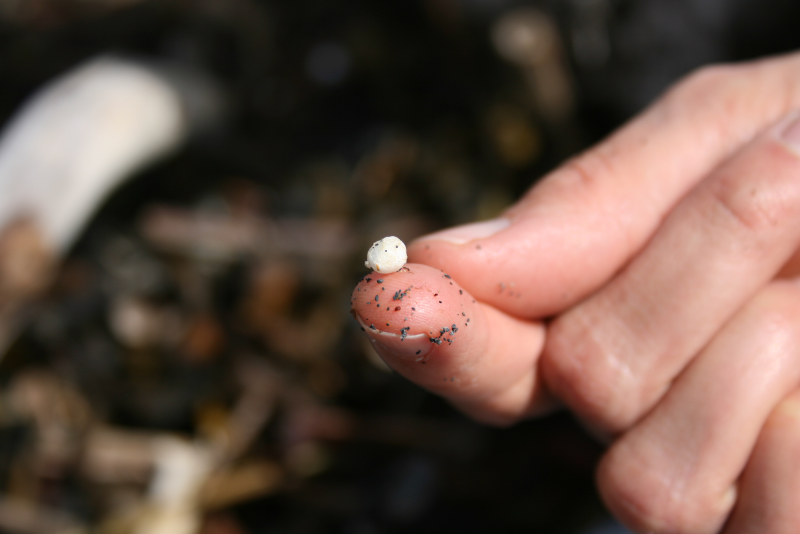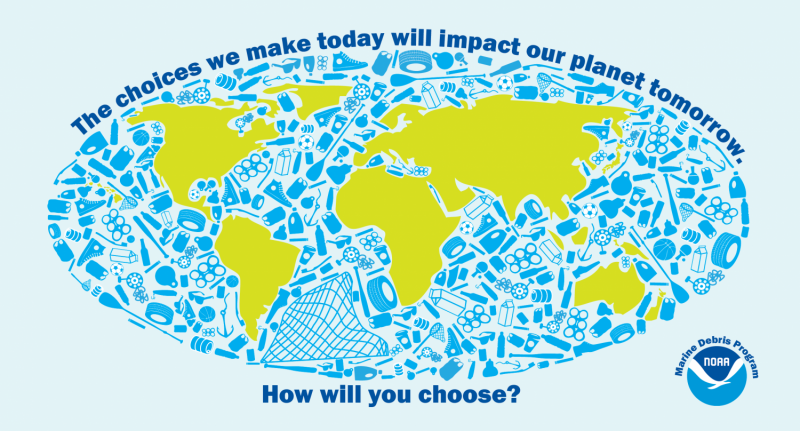
Marine debris comes in all shapes and size, from large abandoned vessels and nets weighing multiple tons, down to tiny fibers from a cigarette butt. Some of the tiniest debris may be causing some big problems. Microplastics, or plastic pieces less than 5mm in size, are persistent and pervasive. Clothing and fishing nets can shed microfibers, which can be a type a microplastic. Cosmetics can contain tiny plastic beads that get washed down our drains and into our waterways. Large pieces of plastic can be beaten by the sun and waves until they fragment into a collection of microplastics. But, what happens when these minuscule microplastics end up in our bodies?
Researchers are still trying to answer this question. What we do know is that people are being exposed to microplastics. They have been found in our seafood, beer, honey, and even our tap water. For the most part, those plastic particles pass right on through our digestive system. A recent small pilot study looked in human poop for plastic pieces. Common plastics could be identified in all eight subjects’ samples. Once that plastic is in a human body, what, if any, effect it has is still unknown.
In general, the main concern from microplastics is not the plastic itself, but what might be sticking to it. There is plenty of evidence that microplastics out in the ocean or Great lakes can absorb contaminants. Pollutants such as PCBs and pesticides have been found to stick to microplastics in high concentrations. In the lab, studies have shown that microplastics can transport these toxic chemicals into an animal’s body. Once in an animal’s digestive tract, the microplastics release the toxins which then move into the surrounding tissue and throughout the body. There is also evidence that illness-inducing bacteria, such as E. coli could be transported by microplastics.
As scientists strive to answer the question of how microplastics are interacting with our body, one thing seems certain, the less microplastic the better. You can help reduce the amount of microplastics in our ocean and Great Lakes by using a filter or fiber catcher to reduce the number of fibers exiting your washing machine, reducing the amount of single-use disposables you use, and by making sure to dispose of all your waste in the proper receptacles.
To learn more about all types of marine debris and how to prevent it, visit the Marine Debris Program’s website.

